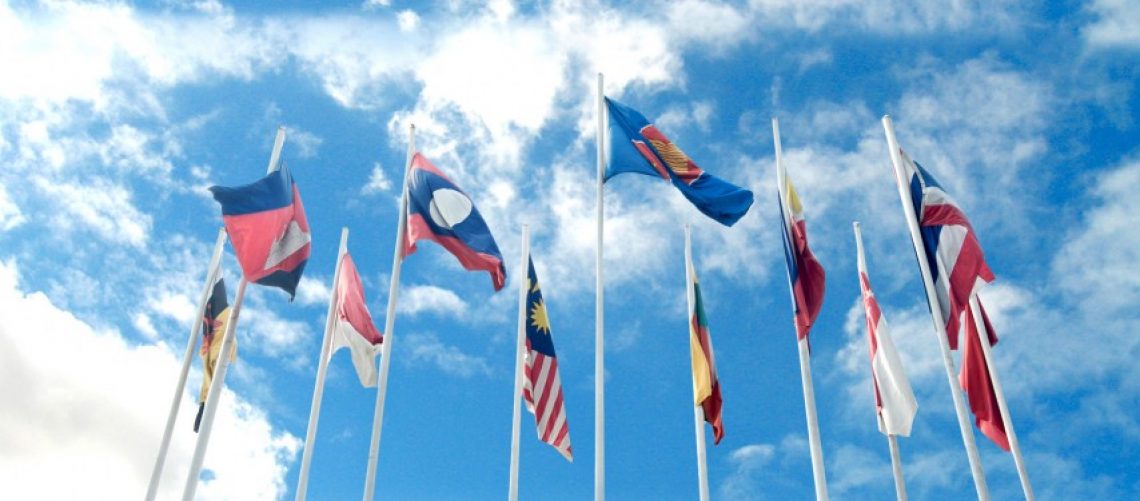1. The 13th Ministerial Meeting on the ASEAN-Mekong Basin Development Cooperation (AMBDC) was held in Manado, Indonesia on 12 August 2011. The Meeting was chaired by H.E. Dr. Mari Elka Pangestu, Minister of Trade, Indonesia. The Meeting was attended by delegates from the ASEAN Member States and the People’s Republic of China.
2. The Ministers took note of the progress made in the implementation of AMBDC projects. As of 29 July 2011, there are 51 projects at various stages of implementation. A total of 14 projects still require funding worth US$272.5 million.
3. The Ministers also noted the progress of activities from the various countries on the Singapore-Kunming Rail Link (SKRL) Project and continued to place the project as priority. The 13th Special Working Group on the SKRL will be held later this year to further discuss construction on the missing links and the mobilisation of resources to complete the various projects.
4. The Ministers shared the views that the activities under the SKRL shall be synergized with those of the Master Plan on ASEAN Connectivity to further contribute to the efforts towards realising the ASEAN Community of continued economic growth, reduced development gap and improved connectivity among Member States and between Member States and the rest of the world.
5. In view that the SKRL is one of the many key actions under the Master Plan, the Ministers urged strengthening of coordination between the Special Working Group on the SKRL with the ASEAN Connectivity Coordinating Committee (ACCC).
6. The Meeting agreed that the 14th AMBDC Ministerial Meeting will be held in Cambodia in 2012.
7. The Ministers thanked the Government and people of Indonesia for hosting the 13th Ministerial Meeting on the ASEAN-Mekong Basin Development Cooperation.
List of Ministers
1. H.E. Pehin Dato Lim Jock Seng, Second Minister of Foreign Affairs and Trade, Brunei Darussalam
2. H.E. Cham Prasidh, Senior Minister and Minister of Commerce, Cambodia
3. H.E. Li Pumin, Deputy Secretary-General, National Development and Reform Commission, the People’s Republic of China (representing H.E. Du Ying, Vice Chairman, National Development and Reform Commission, the People’s Republic of China)
4. H.E. Dr. Mari Elka Pangestu, Minister of Trade, Indonesia
5. H.E. Nam Viyaketh, Minister of Industry and Commerce, Lao PDR
6. H.E. Dato’ Sri Mustapa Mohamed, Minister of International Trade and Industry, Malaysia
7. H.E. U Tin Naing Thein, Minister for National Planning and Economic Development, Myanmar
8. H.E. Gregory L. Domingo, Secretary of Trade and Industry, the Philippines
9. H.E. Lim Hng Kiang, Minister for Trade and Industry, Singapore
10. Mr. Yangyong Phuangrach, Permanent Secretary Ministry of Commerce, Thailand
11. H.E. Nguyen Cam Tu, Deputy Minister of Industry and Trade, Viet Nam
12. H.E. Surin Pitsuwan, Secretary-General of ASEAN
- ABOUT ASEANThe Association of Southeast Asian Nations, or ASEAN, was established on 8 August 1967 in Bangkok, Thailand, with the signing of the ASEAN Declaration (Bangkok Declaration) by the Founding Fathers of ASEAN: Indonesia, Malaysia, Philippines, Singapore and Thailand. Brunei Darussalam joined ASEAN on 7 January 1984, followed by Viet Nam on 28 July 1995, Lao PDR and Myanmar on 23 July 1997, and Cambodia on 30 April 1999, making up what is today the ten Member States of ASEAN.Menu
- WHAT WE DO
ASEAN organs always strive to achieve ASEAN’s goals and objectives, the Secretary-General of ASEAN and the ASEAN Secretariat shall be functioned as coordinating Secretariat to help facilitate effective decision-making withing and amongst ASEAN bodies. In addition, each Member State shall appoint a Permanent Representative to liaise with Secretary-General of ASEAN and the ASEAN Secretariat
Menu - WHO WE WORK WITH
ASEAN shall develop friendly relations and mutually beneficial dialogues, cooperation and partnerships with countries and sub-regional, regional and international organisations and institutions. This includes external partners, ASEAN entities, human rights bodies, non-ASEAN Member States Ambassadors to ASEAN, ASEAN committees in third countries and international organisations, as well as international / regional organisations.
Menu - OUR COMMUNITIES
The rodmap for an ASEAN Community (2009-2015) was declared by the leaders in 2009. The ASEAN Community, anchored on three community pillars: Political-Security Community, Economic Community, Socio-Cultural Community was launched in 2015. The ASEAN 2025: Forging Ahead Together was introduced in 2015 as a Post-2015 Vision. It comprises the ASEAN Community Vision 2025, the ASEAN Political-Security Community Blueprint 2025, the ASEAN Economic Community Blueprint 2025 and the ASEAN Socio-Cultural Community Blueprint 2025
Menu - SITEMAP





